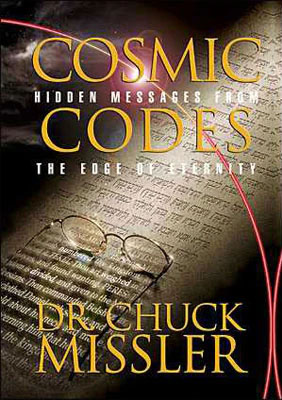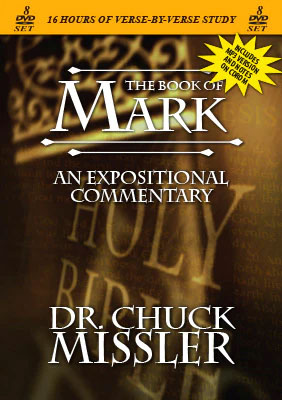There has been much controversy over the final 12 verses of the Gospel of Mark. Behind this dispute lies some astonishing discoveries of profound significance.
The oldest existing manuscripts of the Greek New Testament text are three that had their origins in Alexandria in the 4th and 5th centuries.1 Since they are the oldest (in our present possession), many regard them as having an eclipsing authority. There are a number of passages that do not appear in these Alexandrian manuscripts, and therein lies an intense ecclesiastical debate.
Textus Receptus
At the end of the 3rd century, Lucian of Antioch compiled a Greek text that achieved considerable popularity and became the dominant text throughout Christendom. It was produced prior to the Diocletain persecution (~303), during which many copies of the New Testament were confiscated and destroyed.
After Constantine came to power, the Lucian text was propagated by bishops going out from the Antiochan school throughout the eastern world, and it soon became the standard text of the Eastern church, forming the basis of the Byzantine text.
From the 6th to the 14th century, the great majority of New Testament manuscripts were produced in Byzantium, in Greek. It was in 1525 that Erasmus, using five or six Byzantine manuscripts dating from the 10th to the 13th centuries, compiled the first Greek text to be produced on a printing press, subsequently known as Textus Receptus ("Received Text").
The translators of the King James Version had over 5,000 manuscripts available to them, but they leaned most heavily on the major Byzantine manuscripts, particularly Textus Receptus.
Textus Receptus Dethroned
Brooke Foss Westcott and Fenton John Anthony Hort were Anglican churchmen who had contempt for the Textus Receptus and began a work in 1853 that resulted, after 28 years, in a Greek New Testament based on the earlier Alexandrian manuscripts.
Both men were strongly influenced by Origen and others who denied the deity of Jesus Christ and embraced the prevalent Gnostic heresies of the period. There are over 3,000 contradictions in the four gospels alone between these manuscripts. They deviated from the traditional Greek text in 8,413 places.
They conspired to influence the committee that produced The New Testament in the Original Greek (1881 revision), and, thus, their work has been a major influence in most modern translations, dethroning the Textus Receptus.
Detractors of the traditional King James Version regard the Westcott and Hort as a more academically acceptable literary source for guidance than the venerated Textus Receptus. They argue that the disputed passages were added later as scribal errors or amendments.
Defenders of the Textus Receptus attack Westcott and Hort (and the Alexandrian manuscripts) as having expurgated these many passages, noting that these disputed passages underscore the deity of Christ, His atonement, His resurrection, and other key doctrines. They note that Alexandria was a major headquarters for the Gnostics, heretical sects that had begun to emerge even while John was still alive.2
(It is also evident that Westcott and Hort were not believers and opposed taking the Bible literally concerning the Atonement, Salvation, etc. If you read their personal writings you wouldn't dream of letting them lead your Sunday School class!)3
The Last 12 Verses of Mark
Among the disputed passages are the final verses of the Gospel of Mark (16:9-20). (Look in your own Bible: you are likely to find an annotation that these were "added later.")
The insistence that Mark's Gospel ends at 16:8 leaves the women afraid and fails to record the resurrection, Christ's final instructions, and the Ascension. It is understandable why these verses are an embarrassment to the Gnostics, and why Westcott and Hort would advocate their exclusion, and insist that they were "added later."
However, it seems that Irenaeus in 150 A.D., and also Hypolytus in the 2nd century, each quote from these disputed verses, so the documentary evidence is that they were deleted later in the Alexandrian texts, not added subsequently.)
But there is even more astonishing evidence for their original inclusion that is also profoundly instructive for broader reasons.
The Fingerprints of the Author
Let's examine these verses and explore their underlying design. Just as we encounter fingerprint or retinal scanners to verify an identity in today's technological environment, it seems that there is an astonishingly equivalent "fingerprint" hidden beneath the Biblical text that is still visible despite the veil of the centuries.
(Fasten your seat belts!)
The Heptadic Structure of Scripture
Everyone who explores their Bible quickly discovers the pervasiveness of Seven: there are over 600 explicit occurrences of "sevens" throughout both the Old and New Testaments. As many of our readers are aware, there are also prevalent evidences of design hidden behind the text.4 The "Heptadic" (sevenfold) structure of Biblical text is one of the remarkable characteristics of its authenticity. What about these disputed 12 verses?
There are 175 (7 x 25) words in the Greek text of Mark 16:9-20. Curious. These words use a total vocabulary of 98 different words (7 x 14), also an exact multiple of seven. That's also rather striking.
Try constructing a passage in which both the number of words and the number of letters are precisely divisible by seven (with no remainder)! The random chance of a number being precisely divisible by 7 is one chance in seven. In seven tries, there will be an average of six failures.
The chance of two numbers both being divisible by 7 exactly is one in 72, or one in 49. (This is a convenient simplification; some mathematical statisticians would argue the chance is one in 91.5 ) This still might be viewed as an accidental occurrence, or the casual contrivance of a clever scribe. But let's look further. The number of letters in this passage is 553, also a precise multiple of seven (7 x 79). This is getting a bit more tricky. The chance of three numbers accidentally being precisely divisible by seven is one in 73, or one in 343. This increasingly appears to be suspiciously deliberate.
In fact, the number of vowels is 294 (7 x 42); and the number of consonants is 259 (7 x 37). Do you sense that someone has gone through a lot of trouble to hide a design or signature behind this text?
As we examine the vocabulary of those 98 (7 x 14) words: 84 (7 x 12) are found before in Mark; 14 (7 x 2) are found only here. 42 (7 x 6) are found in the Lord's address (vv.15-18); 56 (7 x 8) are not part of His vocabulary here.
This is, conspicuously, not random chance at work, but highly skillful design. But just how skillful?
With 10 such heptadic features, it would take 710, or 282,475,249 attempts for these to occur by chance alone. How long would it take the composer to redraft an alternative attempt to obtain the result he was looking for? If he could accomplish an attempt in only 10 minutes, working 8 hours a day, 40 hours a week, 50 weeks a year, these would take him over 23,540 years!
But there's more. The total word forms in the passage are 133 (7 x 19). 112 of them (7 x 16) occur only once, leaving 21 (7 x 3) of them occurring more than once; in fact, these occur 63 (7 x 9) times.
If we examine more closely the 175 words (7x 25), we discover that 56 (7 x 8) words appear in the address of the Lord and 119 (7 x 17) appear in the rest of the passage.
The natural divisions of the passage would be the appearance to Mary, verses 9-11; His subsequent appearances, verses 12-14; Christ's discourse, verses 15-18; and the conclusion in verses 19-20. We discover that verses 9-11 involve 35 words (7 x 5). Verses 12-18, 105 (7 x 15) words; verse 12, 14 (7 x 2) words; verses 13-15, 35 (7 x 5) words; verses 16-18, 56 (7 x 8) words. The conclusion, verses 19-20, contains 35 (7 x 5) words.
It gets worse. Greek, like Hebrew, has assigned numerical values to each letter of its alphabet. Thus, each word also has a numerical ("gematrical") value.
The total numerical value of the passage is 103,656 (7 x 14,808). The value of v.9 is 11,795 (7 x 1,685); v.10 is 5,418 (7 x 774); v.11 is 11,795 (7 x 1,685); vv.12-20, 86,450 (7 x 12,350). In verse 10, the first word is 98 (7 x 14), the middle word is 4,529 (7 x 647), and the last word is 791 (7 x 113). The value of the total word forms is 89,663 (7 x 12,809). And so on.
Individual words also tell a tale. θανασιμον, deadly (v.18) is not found elsewhere in the New Testament. It has a numeric value of 581 (7 x 83), and is preceded in the vocabulary list by 42 (6 x 7) words, and in the passage itself by 126 (7 x 18) words.
This all is among the legendary results of the work by Dr. Ivan Panin. (See inset below). In fact, he identified 75 heptadic features of the last 12 verses of Mark.7 We have highlighted only 34 heptadic features. If a supercomputer could be programmed to attempt 400 million attempts/second, working day and night, it would take one million of them over four million years to identify a combination of 734 heptadic features by unaided chance alone.7
Authentication Codes
Just as we encounter coding devices in our high technology environments, here we have an automatic security system that monitors every letter of every word, that never rusts or wears out, and has remained in service for almost two thousand years! It is a signature that can't be erased and which counterfeiters can't simulate.
Why are we surprised? God has declared that He "has magnified His word even above His name!"8 We can, indeed, have confidence that, in fact, the Bible is God's Holy Word, despite the errors man has introduced and the abuse it has suffered throughout the centuries. It is our most precious possession-individually as well as collectively.
And it never ceases to unveil surprises to anyone that diligently inquires into it.
Notes:
- Codex Alexandrinus: a 5th century manuscript containing the entire New Testament, brought to England about 1630. Codex Siniaticus, discovered in St. Catherine's Monastery at (the traditional) Mt. Sinai, has been dated around 350 A.D. Codex Vaticanus, dated about 325 A.D., had been in the Vatican Library since at least 1481, but was not made available to scholars until the middle of the 19th century.
- 1 John 1:1, 4:2,3; et al.
- For a sampling of their correspondence, etc., see our Briefing Package, How We Got Our Bible, from which this article was excerpted.
- Previous articles on Matt 1:1-11in this News Journal, as well as our recent book, Cosmic Codes: Hidden Messages From the Edge of Eternity, etc.
- Actually, it can be mathematically argued that it is 91. p = 1/7*[(n-1)/(7n-1)]*[(n-2)/(7n-2)]* . . . *[1/(7n-(n-1))] is far more restrictive than the assumptions here.
- Ivan Panin, The Last Twelve Verses of Mark, B-761, Bible Numerics, Suite 206, 121 Willowdale Ave., Willowdale, Ontario, M2N 6A3, (406) 221-7424.
- 734 = ~5.4 x 1028 tries needed. There are 3.15 x 107 sec/year; at 4 x 108 tries/sec, it would take about 4.3 x 1012 computer-years.
- Psalm 138:2.







